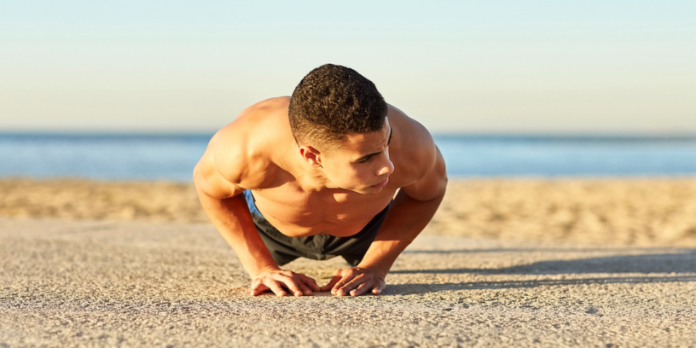As body weight workout routines go, it’s exhausting to seek out fault with the push-up. It’s handy, difficult, practical, and it builds muscle with out beating up your joints. Among the many numerous variations of this traditional transfer (e.g., T push-up, clapping push-up, archer push-up, decline push-up, offset push-up, and so forth.), diamond push-ups are one of many easiest and most accessible.
However that doesn’t imply they’re straightforward.
“They’re safer on the shoulder joint,” says coach Jolie Kobrinsky, RKC, TRX, proprietor of Elektren Studio in Seaside, CA. “They’re additionally harder to carry out.”
Need to work this traditional upper-body builder into your program? Learn on.
Diamond Push-Ups: Step-by-Step Directions
- Assume a push-up place (physique straight from head to heels, core engaged, glutes squeezed, palms flat on the ground, and arms straight and consistent with your shoulders). Transfer your palms collectively in order that the guidelines of your thumbs and index fingers are touching (see the diamond form?). That is the beginning place.
- Conserving your elbows tucked to your sides (don’t allow them to flare), decrease your torso till your chest flippantly touches the backs of your palms. (Or so far as you possibly can go with out shedding correct type.)
- Pause, after which push your self again as much as the beginning place.
Easy methods to Make Diamond Push-Ups Simpler
Whilst you can carry out the train in your knees to make it simpler, a extra useful modification could be to carry out it along with your palms elevated on a steady floor, like a desk, countertop, bench, or railing. As you change into stronger, transfer your palms nearer to the bottom till you possibly can carry out the usual variation of this train.
Tougher than the standard transfer however not as exhausting as a single-arm or plyometric push-up, the diamond push-up is an intermediate-level energy train. So earlier than you try this transfer, it’s best to be capable to full at the very least 10 common push-ups in a row with good type.
Easy methods to Make Diamond Push-Ups Tougher
As soon as you possibly can bang out 15 or extra consecutive diamond push-ups along with your palms on the bottom, you can also make the transfer more durable with these modifications, listed in ascending order of problem:
- Pause on the backside of the transfer (with out resting your chest on the ground).
- Decelerate the eccentric (decreasing) part and speed up the concentric (pushing-up) part of every rep.
- Carry out one-and-a-half reps: Decrease your self, go midway up, decrease your self a second time and go all the way in which up — that’s one rep.
- Strive the transfer along with your ft elevated, beginning with a low field or step (an cardio step works nicely).
- Carry out it whereas sporting a weighted vest.
- Mix any of the above strategies.
Diamond Push-Ups: Muscle groups Labored
These are the muscle teams that you simply’ll really feel working through the diamond push-up.
Chest
Diamond push-ups distribute the workload amongst your higher physique’s “pushing” muscle groups, AKA your chest, shoulders, and triceps. In conventional push-ups, your chest muscle groups (pectorals) take the brunt of the work.
Shoulders
The entrance of your shoulders (deltoids) are supporting gamers on this motion. By inserting your palms nearer to 1 one other, you enhance the emphasis on the deltoids.
Triceps
The backs of your arms (triceps) are extra closely emphasised with diamond push-ups. They’ve the duty of serving to you absolutely prolong or straighten your arms, which, with the nearer hand positioning, turns into more durable to do.
Core muscle groups
All sorts of push-ups (together with the diamond push-up) work your core muscle groups, that are answerable for conserving your backbone steady and supported. These muscle groups embrace embrace the rectus abdominis (i.e., your abs), the transverse abdominis, the exterior obliques, and the erector spinae.

